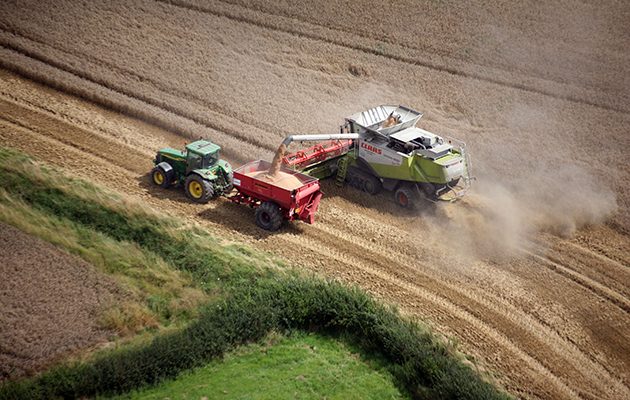Our sinking fenlands spell disaster for both food production and wildlife. What can be done to halt this slide towards disaster, asks Tim Field
Major feats of engineering has allowed us to crop the fenlands, but now the bread basket of England needs protecting, says Tim Field. What is the solution for to the sinking fenlands?
For more on farming, learn about the history of agriculture during the Golden Era of fieldsports – read The Great Depression of British Agriculture: a history.
SINKING FENLANDS
Deep, rich, Bournville-coloured soils disappear into the far-reaching horizon, dissected by a network of ditches slicing neatly into the land’s surface. Narrow, arrow-straight roads perch on top. Grain silos tower in the landscape; irrigation rigs line up to create an artificial weather front; machinery loaded with horsepower tracks a metronomic rhythm back and forth across vast fields, many measuring a hundred acres or more. From potatoes to carrots, sugar beet and some of the highest yielding cereal crops in the nation, the Fenlands of East Anglia are at the heart of England’s bread basket.
The ability to crop this prime land has only been made possible through incredible feats of engineering dating back to the Romans. Since the 17th century, wind, coal, diesel and now electric pumps have succeeded in draining considerable areas of ancient peat fen for cultivation. However, we now need to start looking at another form of engineering if the harvests are to continue.
Since the major draining works began, the fenlands have fallen to such an extent that they reside substantially below sea level. With the lowering of the water table, the entire soil profile has shrunk like a dried-out sponge. In 1848, the concerning rate of shrinkage led to a long post being driven into the ground in Cambridgeshire (known as the Holme Post) to take accurate ground readings; it now measures approximately four metres below original ground level.
The loss of buoyancy and the cushioning effect of water in the peat caused a structural change, from that of a forgiving waterbed to something more akin to a plywood mattress. Much like the accumulation of powder-snow forming a glacier, the layers of peat have compressed under their own weight and that of heavy machinery. Another contributor to falling ground levels is wind erosion, where gales sweep up exposed, bare winter soils. It was particularly evident as “snirt” (or dirty snow) left behind after a visit from the Beast from the East last winter.
CHEMICAL CHANGE
A further underlying cause of falling ground levels is as a result of chemical rather than physical change. The peat soils’ superior condition is in no small part due to their high organic content, which is rich in carbon. The underlying peat has been without oxygen for thousands of years, locking tonnes of carbon in a stable state beneath our feet. This carbon becomes active when exposed to air, oxidising and releasing carbon dioxide, thus changing from a solid to gas. As well as lowering the level of finite peat, this has significant consequences for climate change.
We also know many of our farmland bird species are in decline and recently published “windscreen” research demonstrates a staggering absence of flying insects. These agriculture deserts should be buzzing with clouds of insects and vast packs of wading birds – oyster catchers, lapwing, golden plover – foraging the cropping lands and retreating to the wetlands for refuge, breeding or roosting.
So, what is the answer? During a recent visit to the Great Fen project I learnt of the ambitious undertaking to re-flood and protect about 3,700ha of the 24,000ha area of original fenland peat soils. The Great Fen conservation work will no doubt arrest the decline, add extraordinary ecological value and be a great deal more interesting than the current green desert monotony of arable and field vegetables. However, when pushed on a solution for the threatened acreage outside the project area, I was somewhat more disappointed by the response. In short, “flood the whole lot, create a market for sphagnum moss and see the wildlife flood back in”. Literally flood the bread-basket of England and allow European bison to roam saturated soils.
Meanwhile, in the UK’s uplands, George Monbiot and co demand we relinquish land management duties to reintroduced wolves and lynx. I do not doubt their good intentions but it shows naivety around the bigger picture of food security. If the UK doesn’t become more self-sufficient in agriculture we will end up exporting our environmental problems. At risk of losing both the agricultural and ecological value of the fens, the farming system would be better to focus on building soil carbon – using cover crops, trees, regenerative leys with grazing livestock and more diverse crop rotation – to help arrest the peat wastage, whilst benefiting wildlife in the process. Agro-ecological engineering is the perfect complement to past industrial successes.
Follow Tim and Agricology @agricology





